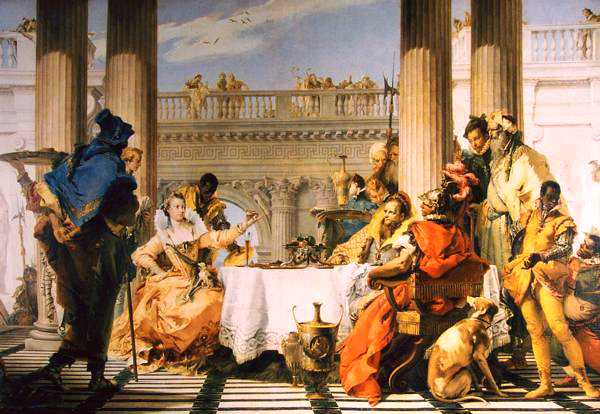Classicism and anachronism
Although it was slow to catch on in England, the influence of classical Greece and Rome continued until the Romantic movement of the early nineteenth century.
In English Renaissance drama, the great classicist was Ben Jonson, whose work was closely modeled on classical works and precepts; other writers, including Shakespeare*, followed the older, native traditions in art, much as the architects clung to the Gothic style in their buildings.
In Europe the work of the great Rococo artist Tiepolo shows that the principles of balance and decorum persisted, and that the sculptural effect of classical architecture was still much admired. The painting here is also interesting in that Cleopatra is pictured in full contemporary dress, rather than the dress of her period, much as the dress on the Elizabethan stage tended to be Elizabethan*.
Footnotes
-
Classical Shakespeare
At least two of Shakespeare's works do show some influence of the classical: the early Comedy of Errors, based on a play by Plautus, follows the pattern of Roman comedy. While the first of the Roman tragedies, Julius Caesar, does not adhere to the neo-classical "unities", Shakespeare does create a restrained, classical language in the play. Like Tiepolo, however, he was not afraid of anachronism when it was convenient or dramatically effective.
A useful stage device to show the passing of time is a clock striking--as one does in Julius Caesar, despite the fact that the clock was a relatively recent invention.
-
Anachronism and costume
In the contemporary sketch of a performance of Titus Andronicus, the central characters are dressed in stage Roman cosumes, but the attendants are in normal Elizabethan dress. Such apparent anachronism was commonplace in the Renaissance; click for a further example.
